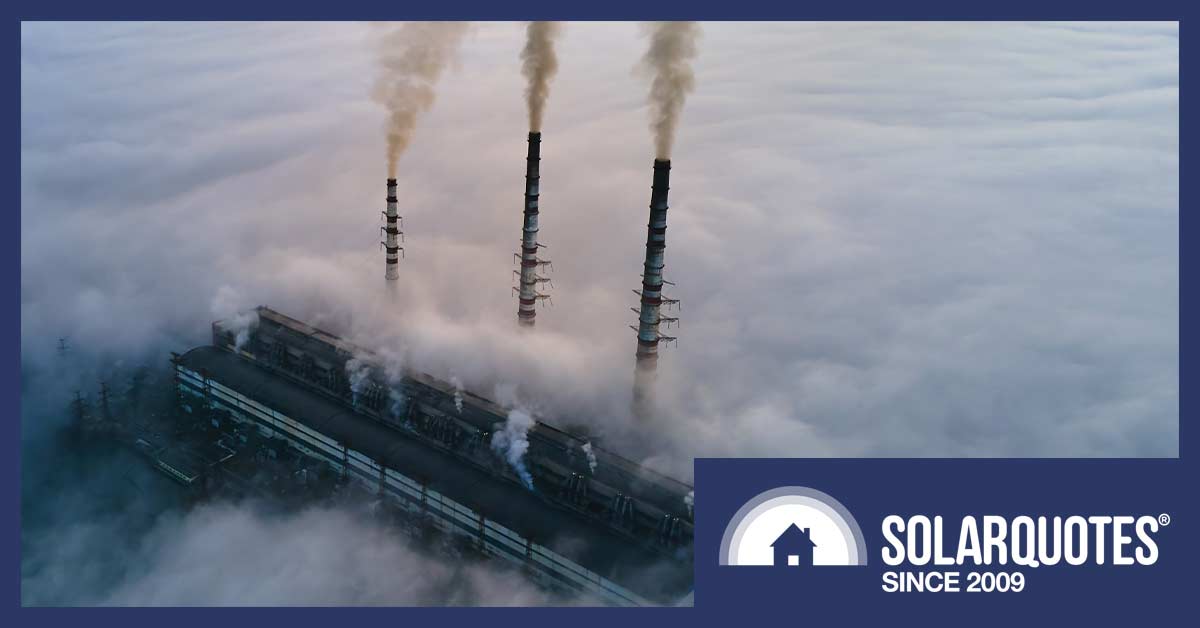
2022 is on its final legs and soon to expire. Even though it’s disrespectful to speak ill of the soon-to-be departed, I’m going to come straight out and say — when it came to greenhouse gas emissions — 2022 was the absolute worst.
Human activity caused more emissions this year than any other. The final figures aren’t in, but they’re expected to be 0.8% higher than 2021 — the previous record holder.
That’s an extra 300 million tonnes: the weight of half the water in Sydney Harbour and even heavier than that fridge your mate swore would easily move between the two of you.
Good News?
Thanks to superhuman levels of optimism, I’ve found a silver lining on this massive cloud of heat-trapping gas. From 2023 onwards, emissions should be heading down. I can’t guarantee 2022 will be the peak, but I’m willing to bet on it. However, not everyone is as optimistic. For example, the United Nations isn’t expecting a decline until around 2030.
The reason I’m optimistic is that — after a lot of foot-dragging — we’re now getting many things right.
Four areas where we’re improving rapidly are…
- Wind and solar power generation
- Electric vehicles
- Energy storage
- Energy efficiency
To understand my reasoning, read on. If you just want to place a bet, please send your stake to my mother to hold. I’m very optimistic that she can be trusted.
Record Breaking Emissions
Greenhouse gas emissions from human activity have three main sources:
- Burning fossil fuels
- Land clearing
- Agriculture
Note for angry old men before they comment: Carbon dioxide from human breathing is not included. The carbon that comes out of your mouth comes from plants that recently absorbed it from the atmosphere. What we breathe out is in balance with what plants take in. Greenhouse gas emissions from human digestion aren’t counted, as they’re supposedly trivial — although I have met people who have made me wonder if that’s actually true.
The emissions we’re worried about are not in balance and, for the most part, build up in the atmosphere and trap heat and contribute to global roasting. The Word Emissions Clock says these will be 57.8 billion tonnes in 2022. The International Energy Agency (IEA) looks at carbon emissions from fossil fuel use and estimates they’ll come to 33.8 billion tonnes.
Carbon dioxide is the largest component of our emissions and has the largest overall warming effect. Next is methane and then nitrous oxide. This makes laughing gas our third largest contributor to climate change. This is no laughing matter, despite being kind of funny.
Our emission totals are given as CO2 equivalents where the warming effect of methane and other greenhouse gases are converted into the equivalent amount of CO2 for convenience.
The 2022 CO2 equivalent figure of 57.8 billion tonnes of emissions is enough to cover Australia with a 4.3 m thick layer of carbon dioxide. This is deep enough to asphyxiate anything shorter than an adult giraffe.
The Rise & Coming Fall Of Emissions
The graph below shows the rise in annual global emissions from burning fossil fuels going from next to nothing 170 years ago to just under 38 billion tonnes in 2021. I added a black dot to the graph to show the estimate for 2022:
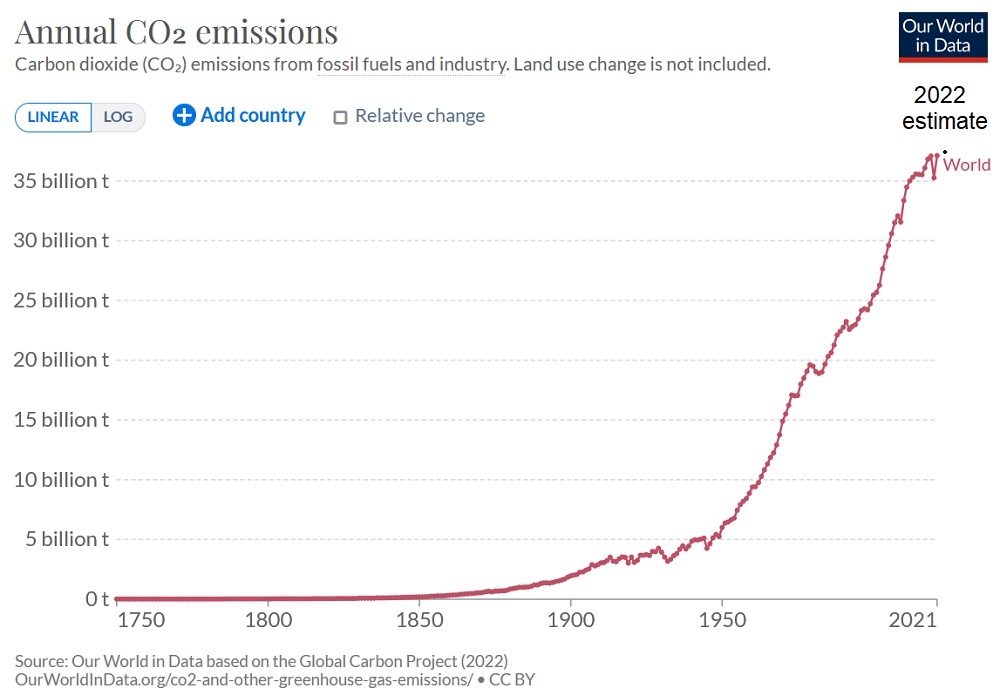
This graph is from Our World in Data, but I personally defaced it by adding the estimate for 2022.
As you can see, for three of the past four years, emission levels have been very close. The exception was 2020 which saw the largest fall in history thanks to the pandemic. If we ignore that year, then it looks as though carbon dioxide emissions have almost levelled off. I’m expecting them to be below the peak in 2023 and every year after.
The decline may be gradual at first, but as fossil fuel replacement switches into high gear and improvements are made to land care and agriculture, I’m hoping the fall will become faster than its rapid rise in the second half of the 20th century.
Fast Emission Cuts Required
In 1882 the concentration of CO2 in the atmosphere was 284 parts per million. It’s now 419 parts per million. We’ve raised a vital component of the biological and temperature balance of the Earth 48% over the past 140 years.
We’ve fiddled more than is generally considered wise.
With help from methane and other greenhouse gases, this has raised global temperatures by around 1 degree. This may not sound like much, but it’s already causing plenty of problems. In the last ice age glacial period 20,000 years ago, sea levels were 120 m lower and our ancestors were hunted by giant cats. I don’t want our descendants to experience whatever may happen if we go too far in the other direction.

Tragically, our ancestors only ever rode sabretooth cats in the sense that I give my lunch a ride after eating it.
If we want to keep the world’s climate, ecosystems, and agricultural zones in a state vaguely similar to how Grandma and Grandpa found them, rapid emission cuts are vital. Unfortunately, modest emission reductions won’t stop greenhouse gases building up in the atmosphere. Without major cuts, concentrations will keep rising and the Earth will keep roasting.
The 80% Solution
If global greenhouse gas emissions are cut 80% it will cause their levels in the atmosphere to roughly stabilize. This is because they will more or less be in balance with natural processes removing them from the atmosphere — with the main one being absorption by the ocean. This would be a massive improvement over what’s occurring today but, while it would slow global warming, it wouldn’t stop it.
Temperatures would slowly rise for centuries because it takes time for the ground and oceans to warm up and for ice to melt. It’s like when you take a chop out of the freezer. It takes time for it to match the temperature of the atmosphere and the earth is a bloody big chop.
Because an 80% cut should stabilize greenhouse gas concentrations, it may seem like a 90% cut would allow natural processes to gradually remove the excess we’ve added to the atmosphere. Unfortunately, there would only be a modest reduction in their concentration before they mostly stabilize again. What we should do is reduce global emissions down to net zero as rapidly as we reasonably can to maximize the amount of CO2 that gets drawn down by natural processes before a new equilibrium is established.
In the future, I think it would be a good idea to actively remove CO2 and potentially other greenhouse gases from the atmosphere to further slow or completely stop global warming. But we can work out the details in the future. As my mother used to say, “If you find yourself in a hole, the first thing to do is stop digging.”
And my father used to say, “If you’re on fire, you should try to quit smoking.”
This always made me think my father was a lot crazier than my mother.
Reasons For Optimism
The reason I’m optimistic 2022 will be the year of peak greenhouse gas emissions is we’re getting a lot of things right. Of these, the rapid expansion of solar power is probably the most important. Here’s a graph showing how world solar PV capacity has increased since 2010:
In 2022 solar power provided 4.6% of earth’s electricity. This may not sound like a lot, but it’s twice as much as only three years ago in 2019 and enough to take a hefty bite out of fossil fuel emissions. Bloomberg New Energy Finance estimates 315 GW will be installed next year — enough to raise solar power’s share of energy generation from 4.6% to 5.8%. This rapid growth will continue for years to come.
Wind generation is also expanding rapidly:
Solar’s capacity exceeded that of wind in early 2021, but wind currently produces more energy thanks to its higher capacity factor. This will soon change because the cost of solar is falling faster, but this won’t stop wind from being an important energy source for the foreseeable future.
Growing electric car sales are helping to keep emissions from oil in check. The graph below shows how many millions of pure electric and hybrid plug-in vehicles are in the world. I used a conservative estimate for 2022, so once the final figures are in it could be higher:
According to this article battery-only EVs are now 11% of new car sales and plug-in hybrids another 4%. There’s still a long way to go before almost every new car has the ability to run off batteries, but if growth continues at this rate it won’t take long.
There’s also large amounts of stationary battery storage under construction around the world. I couldn’t find a good estimate for the amount installed this year, so the figure for 2022 in the graph below is only my educated guess:
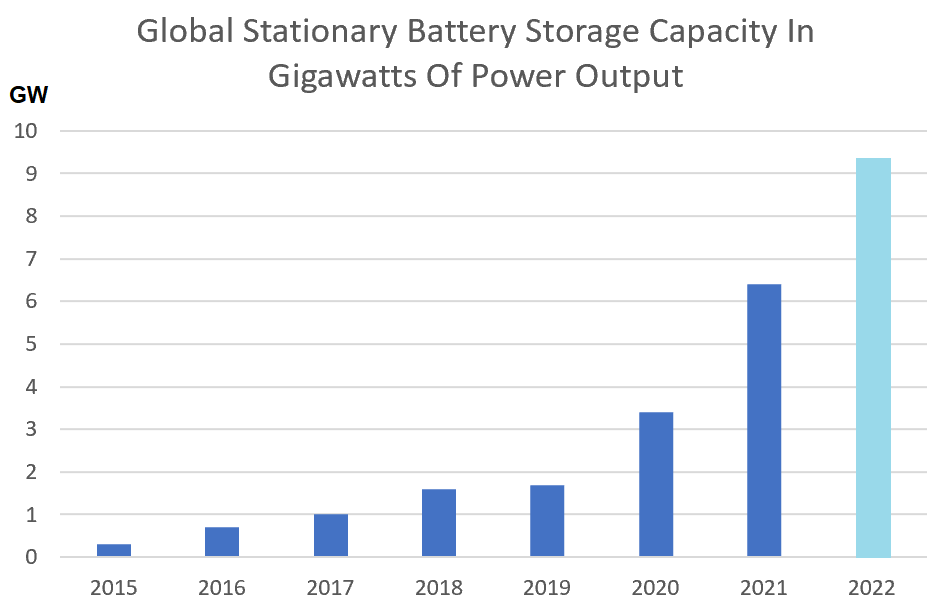
The light blue column for 2022 indicates it’s just my guess. I originally used a column made of question marks, but it made the graph look like it had been designed by a Batman villain.
The figures are in gigawatts (GW) of power output rather than gigawatt-hours (GWh) of energy storage. The number of GWh will be roughly one-third higher than the GW figure.
In addition to stationary battery storage, there will also be a massive amount on wheels inside EVs with the potential to help supply power to homes and the grid. Unfortunately, it may be years before this becomes a practical option for most people.
In addition to batteries, much pumped hydro energy storage is also planned or already under construction. Australia’s Snowy 2 scheme is one example.
Energy Efficiency Is Improving
Australia’s electricity consumption in 2021 was less than 1% higher than in 2011, despite a 15% increase in population thanks mostly to improved efficiency. This trend will continue.
Costs Are Coming Down
Both solar panels and battery storage are likely to see price declines in 2023. There has already been a fall in the cost of solar silicon over the past couple of weeks and further declines are likely. While it’s not expected to decrease by much, lithium is expected to fall in price in 2023 and reduce the price of batteries. A larger fall in lithium prices is expected for 2024 as more mines come online.
These price declines will help keep demand for solar generation and storage high and cut the cost of electric cars. While there may be ups and downs, there will be further price declines over time.
How Could I Be Wrong?
I’m confident 2022 will be humanity’s worst year for greenhouse gas emissions. One reason is the world appears to be heading towards a recession. This will reduce the demand for fossil fuels but it won’t stop the uptake of renewable generation, energy storage, and EVs.
By the time the economy picks up again, I expect emissions will have fallen so far even a huge economic boom won’t push emissions higher than in 2022. But if the world economy in 2023 is strong that may push emissions high enough to create a new record.
If Russia withdraws from Ukraine and attempts to increase natural gas exports, that should boost the world economy. But, since increased gas supply is likely to reduce coal consumption, I don’t think this will cause any large increase in emissions. As no one will want to be dependent on Russian energy it also won’t do much to slow the uptake of renewable generation or efficiency improvements.
Increased Russian oil exports are probably a greater risk, but Russia’s ability to export fossil fuels of any kind has likely deteriorated. Even if their old customers were willing to buy what they used to, I doubt Russia could supply it any time soon.
One thing that could bump emissions higher is a nuclear accident that results in widespread closures of nuclear power stations. While the odds of this happening aren’t high, it is a possibility.
It Should Be Fine!
I am very optimistic 2022 will be the worst year in history for greenhouse gas emissions and no future year will beat it. Thanks to constructive efforts around the world — including by people who’ve taken the very sensible step of putting solar panels on their roofs — soon the question will no longer be, “When will we cut emissions?” It will be, “How fast?”

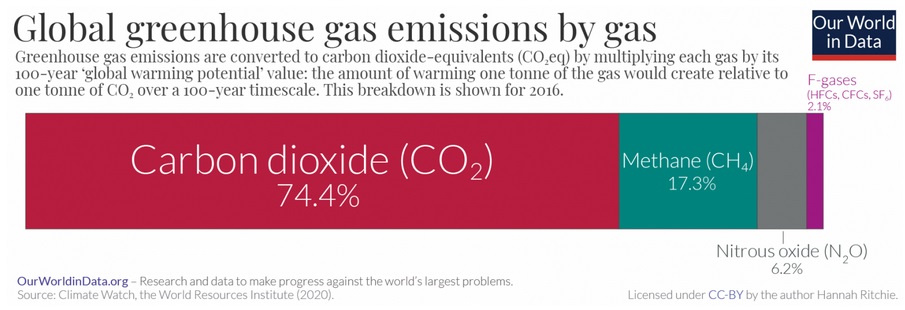
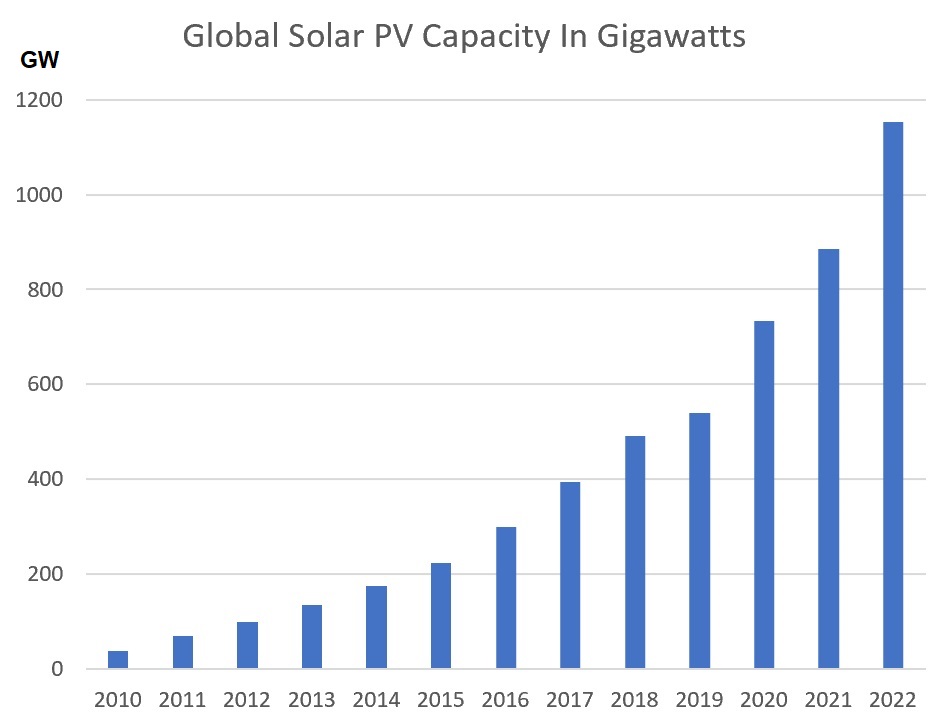
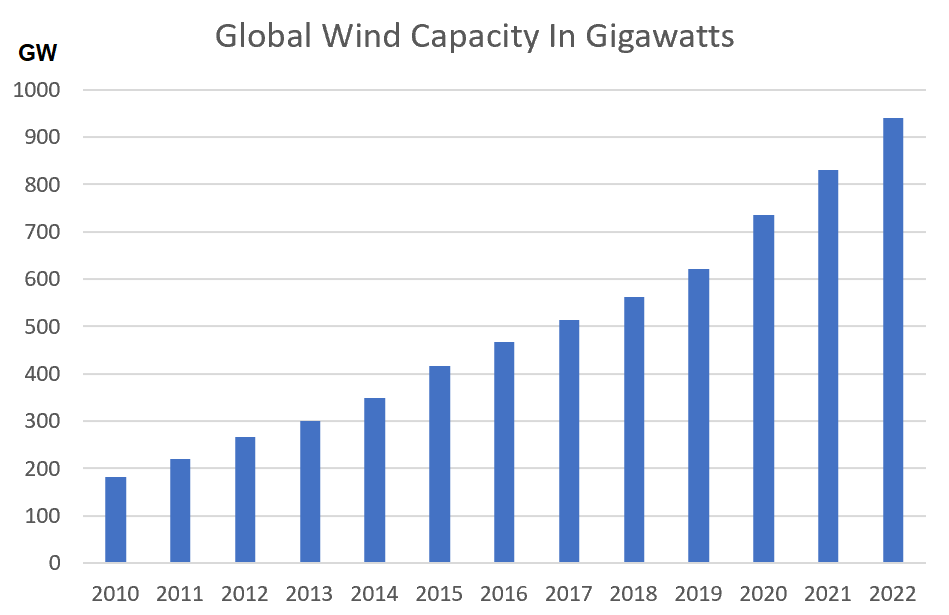
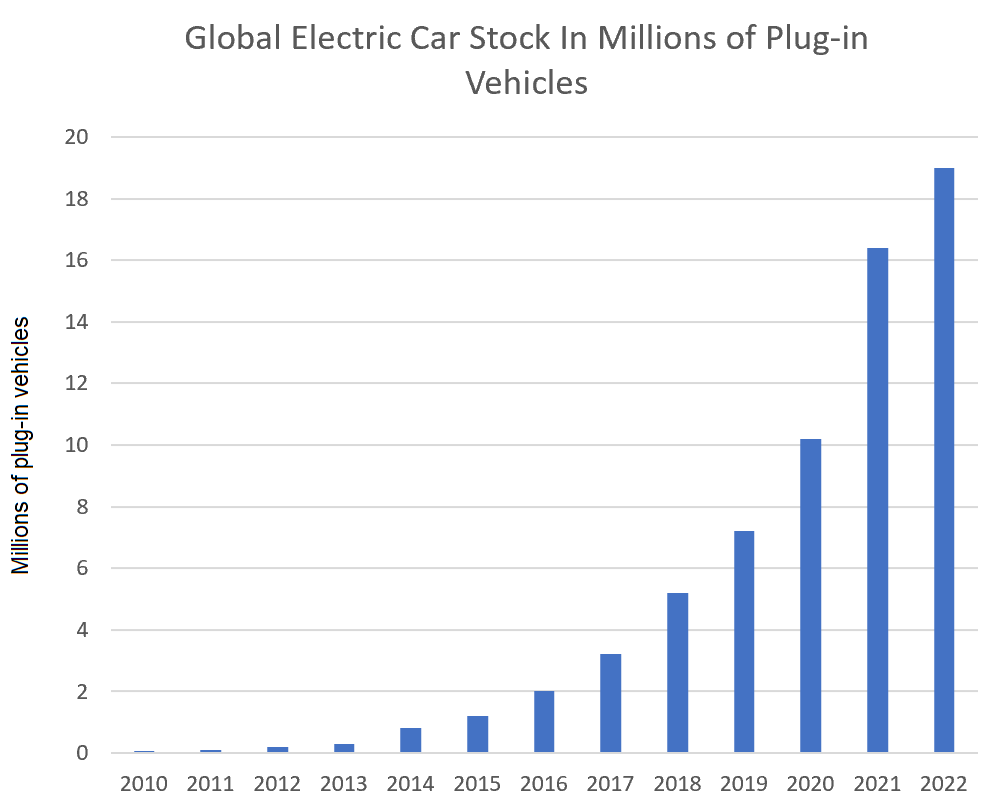
 RSS - Posts
RSS - Posts



I like your optimism Ronald! What’s done is done! Let’s make the next round better by far. Hope we are getting there. Your charts are good evidence many people are taking a swing at it. Just need to stop BURNING STUFF!
Ronald Brakels,
“It Should Be Fine!”
Evidence I see indicates it’s already not fine. We are already in climate territory not seen for millions of years.
Ronald, have you read the Hansen et. al. pre-print paper yet?
https://www.solarquotes.com.au/blog/best-nuclear-fusion-reactor/#comment-1516166
Then there are the climate ‘tipping points’ that Stefan Rahmstorf, head of the Earth System Analysis of the Potsdam Institute for Climate Impact & Research, explores in an op-ed published by Spiegel Science on 23 Dec 2022 in German (translate to English using Google):
https://twitter.com/rahmstorf/status/1607686814273523712
The question remains, how much worse it will get. That depends on:
1) How quickly human-induced GHG emissions can be reduced to zero (NOT net-zero); PLUS
2) How quickly existing GHG concentrations (CO₂ + CH₄ + NOx) already in the atmosphere can be reduced to well below 350 ppm (CO₂-equivalent) – currently already above 508 ppm and still rising – https://gml.noaa.gov/aggi/; PLUS
3) Whether the Arctic summer sea ice cover can be maintained – losing the Arctic sea ice cover completely could lead to a cascade of other climate ‘tipping points’ ensuing and planet Earth likely becomes incompatible for human civilisation before the end of this century.
Ron:
Your calculations are based on selective history. They don’t represent the real world situation.
They are both incomplete and irrelevant moving forward globally.
The real calculations must be derived from and based on the future:-
Eg: The future relating to population growth. Have you forgotten that calculation?
Eg: The future relating to the industrialisation and a technological driven pathways necessary to deliver a modern lifestyle for the NOT YET industrialised nations and peoples – [about 60% of the global population and growing rapidly]. Have you forgotten that calculation also?
The future is now; and globally we need to understand that to accommodate global growth through new age energy intensive technologies that are desperately needed; requires no less than a 40 times uplift on current global annual power generation – incrementally – and broadly achieved and in place globally by about 2075.
This is very achievable through bold technological imperatives being adopted globally and forward thinking policy initiatives.
Global Industrialisation: New Age Energy Intensive Technologies and GHG reduction to insignificant levels permanently; and all three happening simultaneously, are the goal.
And new age nuclear power generation allows for this to be achieved ad infinitum.
I have mentioned this 40x calculation [in greater detail] in many energy forums globally since 2008. Many scientists are supportive of multiples around this value.
Your spreadsheet and mine are very different Ron.
Lawrence Coomber
1. I didn’t do calculations. I just showed trends. I showed how emissions have levelled off recently and trends in solar etc. that contribute to falling greenhouse gas emissions and will, in my opinion, result in 2023 emissions being lower than 2022.
2. Population doesn’t determine emissions. It’s energy use, land use, and agriculture. All these will improve from the point of view of emissions. Note annual population growth is under 1% and decreasing. It’s at its lowest level since the 40s. (Watch out for weird population predictions that assume developed countries will return to replacement rates. There is no sign of that occurring.)
3. Italy is a developed country. They consume about 30,000 kWh of energy from all sources per capita per year. Global average energy consumption is 20,000. So a 40 times increase in energy consumption isn’t required. Especially given higher efficiency of electric vehicles etc. But if people do want to increase their energy consumption 40 times solar will be the cheapest source. Imagine trying to generate 40 times today’s energy use from nuclear. The waste heat would significantly contribute to global warming.
4. But if anyone wants to privately fund nuclear power plants and pay for all costs and try to make money from wholesale electricity markets, that’s fine with me. But I am certain it will be impossible to raise the money as they have no chance of competing with solar + wind + storage which is cheaper than new coal generation.
Ronald,
“I just showed trends.”
ICYMI, here’s another trend highlighted by a tweet from Simon Holmes à Court posted yesterday (Jan 1), including graph:
https://twitter.com/simonahac/status/1609393485907644417
If that trend continues, then RE will overtake coal within the next few years as the single biggest energy source for electricity generation in the NEM.
IMO, it can’t come quick enough!
Many thanks to the Solar Quotes team for their informative service.
Happy New Year 2023!
On reading your spread sheet I am intrigued by your comments.
I note you fail to comment that : As of January 2023 there are 422 operable nuclear power reactors in the world. In addition there are 57 reactors currently under construction in the World. There are 103 reactors planned to be built.
And an additional 325 reactors planned for the future.
I think that shows that nucloear power being used will be the way of the future.
Therefore solar energy will be short lived over a 20 year term whilst nuclear power will be good for at least 40+ years.
Nuclear power has provided a lot of low emission electricity over the years, but it will gradually be replaced. This is because it’s expensive. Even in developing and middle-income countries where engineering labour is cheaper new nuclear capacity doesn’t make economic sense. If nuclear suddenly became far cheaper it could make a comeback, but that’s not going to happen. It would require new nuclear to become cheaper than new coal.
Bob, there is one scenario in which slow-to-build and appallingly expensive radiactive power plants will predominate over cheap, safe, and rapidly deployed solar. That is where runaway climate disruption blankets the planet with a venusian persistent cloud cover. If fossil fuel companies are not soon stripped of their assets, to compensate society for their wilful planetary destruction in pursuit of corporate greed, then they stand to invest in a new exploitative energy monopoly In that literally gloomy future, it will be an advantage to glow in the dark. Please take care in what you wish for..
Bob Smith,
“As of January 2023 there are 422 operable nuclear power reactors in the world.”
It depends on what your definition of “operable” is. The IAEA’s definition seems to me to be loosely defined.
https://pris.iaea.org/PRIS/home.aspx
The World Nuclear Industry Status Report-2022 (WNISR-2022) includes a definition for Long-Term Outage (LTO), where a reactor is considered in LTO if “it has not generated any electricity in the previous calendar year and in the first half of the current calendar year.”
As at 31 Dec 2021, 29 units were in LTO – see WNISR-2022, pages 46-48.
https://www.worldnuclearreport.org/-World-Nuclear-Industry-Status-Report-2022-.html
“In addition there are 57 reactors currently under construction in the World.”
I’d suggest that’s poor, compared with “a peak of 234—totaling more than 200 GW—in 1979.”
Only four countries – China, India, Russia, and South Korea – have construction ongoing at more than one site.
Russian designed and/or implemented projects are likely to be severely disrupted due to sanctions re the Ukraine invasion. And I’d suggest prospective customers for Chinese nuclear technologies are perhaps also reassessing the risks.
Meanwhile, the existing world reactor fleet is ageing, & as of mid-2022, the average age is 31 years. In the decade to 2030, in addition to the units currently under construction, roughly a further 18 units or 15 GW/year is needed just to maintain the status quo.
“I think that shows that nucloear power being used will be the way of the future.”
I’d suggest the evidence/data I see indicates otherwise – too slow to deploy & much too expensive. See Figure 52: The Declining Costs of Renewables vs. Traditional Power Sources, & Figure 53: Variation of Wind, Solar and Nuclear Capacity and Electricity Production in the World, in WNISR-2022
I 100% agree. I’m 100% solar and battery, simply because power costs to install where I live were more expensive than the solar and battery. I’m super glad considering how much everything now costs to use.
Anyway, Solar farms, wind Turbine farms and Giant batteries don’t work, and cities don’t have the infrastructure to use it correctly without a mass overhaul of every city/ town and how power sends and receives. It sounds great “Green”, “100%” self-sustainable. It’s a beautiful lie, but the ugly truth is each panel/ battery consumed resources in mass, many rare materials. We have no real way to recycle any of them, only parts and that’s usually done in poor countries and at the expense of the health of those workers in extremely bad working conditions.
The mass amount of area needed for Farms of Solar or Turbine is huge and requires mass clearing, goodbye forests, rare animal, bird and insect species. The power output is seasonal and dependent on nature, or daylight. We get 2 problems, either not enough power when needed or too much and nowhere able to send it. Lastly, when panels die and need replacing or batteries expire that’s a further cost to replace and dispose of.
The whole cost of a solar farm is huge, people forget this however it’s vital to remember that giant solar farms cost a lot of money.
Nuclear power plants are cheaper in comparison, have smaller size footprints, and can adjust output to match supply vs demand. Most important cause less pollution and destruction than a solar farm.
Now I’m not saying throw in the towel, but don’t be blind either.
Also of importance to note is Germany and France had nuclear generators and the cost of power was very low, now that both countries have been decommissioning those generators for solar farms and wind turbines, guess what electricity has never been more expensive and both have had to sub in Gas generators and diesel to help fill the void as the weather isn’t supplying enough to cover current requirement
Australia gets two-thirds of its solar electricity from rooftops which removes no land from use. But even if solar farms are used, they can still require less area than coal:
https://www.solarquotes.com.au/blog/co2-solar-land-clearing/
A 3 MW wind turbine takes up less than a hectare of land and connecting roads may take up one hectare per turbine, so wind farms remove much less land from use than solar farm. In terms of land area removed from original use, from least to most, it’s: Rooftop solar, wind, solar farm, coal.
marcus,
“Anyway, Solar farms, wind Turbine farms and Giant batteries don’t work…”
Evidence/data says otherwise. marcus, what do you think supplied 26.9% of electrical energy to the NEM in 2022? solar -rooftop (8.9%) + solar -utility (5.5%) + wind (12.5%), plus an additional battery discharging (0.1%) https://opennem.org.au/energy/nem/?range=all&interval=1y
“The whole cost of a solar farm is huge, people forget this however it’s vital to remember that giant solar farms cost a lot of money.”
Compared with what, marcus? CSIRO’s annual GenCost draft report shows despite cost increases in 2022, renewables (onshore wind and solar PV) remain the lowest cost technologies.
https://www.csiro.au/en/news/news-releases/2022/gencost-report-finds-renewables-increasingly-important-as-technology-costs-surge
“Also of importance to note is Germany…”
Wind & solar in Germany has increased by 132 TWh since 2010, which is more than nuclear in Germany has ever generated, which means it has not only replaced all 99 TWh of shut down nuclear since 2010, but it has also replaced some 33 TWh of coal & gas that nuclear was never able to replace!
https://twitter.com/SSjessing/status/1610686210531368960
RE will likely displace all coal- & gas-fired generators in Germany by 2030.
It seems to me the anti-renewable energy propagandists keep getting their facts wrong.
https://cleantechnica.com/2020/02/09/correcting-anti-renewable-energy-propaganda/
Thank you Ronald. We all need a little reminder that good things are happening. Via solar quotes I got a new 6.6kw system in January and a Tesla 3 in march. Looking to change my gas HWS to heat pump and add an induction cooktop in 2023. Doing what I can to help with rewiring the nation.
Bookmarked for review this time next year
I like your thinking. My mother is standing by in case you want to make a bet.
30/12/23 Well here we are after one year. How did we fare? CO2 emissions increased or decreased? My uninformed speculation is increased
While ‘economics’ and ‘reality’ always ultimately triumph, the key issue is still that of ‘just when will those two things succeed in inflicting utter defeat upon a vast array of uninspiring and opposing motley forces of various types?”.
The situation today is very analogous to the situation and conditions that existed at the time of the ‘Peasant’s Revolt” back in 1381 AD. You can read more about that here: https://en.wikipedia.org/wiki/Peasants'_Revolt
Despite the merits of their case and their resolve, the 1381 AD peasants did not ultimately succeed.
Today’s ‘rebel peasants’ includes those who decided to take matters into their own hands by installing roof-top solar systems wherever they resided or worked. As well they also acquired some basic skills in ‘decoding’ the propaganda of their opponents and arriving at it’s real meaning.
eg; “we take climate change seriously’ means: “we don’t intend to do anything at all about it’
and: “we take climate change very seriously” means “we are now even less likely to do anything at all about climate change impacts than we were before”.
Recent election results do suggest that the forces of rational science and common sense have made some progress, But it would be very naive to think that eventual full victory is now assured. There are many more future elections ahead.
I’d suggest that Ronald needs to somewhat temper his optimism level. While it is true that ‘good things are happening’ at the moment, it may prove much harder than we think to continue doing so.
China currently produces roughly a third of all global emissions, but what do they actually intend to do about this?
Yes they are promising increasing use of non-fossil fuel energy, but where is their promise of an absolute reduction in the use of fossil fuel energy? It looks like they are also promising a 65% reduction in CO2 emissions per GDP unit vis-à-vis 2005 levels by 2030, however GDP has risen by roughly 540%. Does this mean they will reduce CO2 emissions, or only reduce their emissions via statistics e.g. reduction in per capita emissions by increasing population not reducing absolute emissions.
Note too this year was China’s highest ever for burning coal despite Beijing banning affordable high grade Australian coal – though some think they see hints that Australia’s new Labor government may opt to abandon Europe and kowtow to Beijing if it means better coal sales. Only time will tell.
George Kaplan,
“Note too this year was China’s highest ever for burning coal despite Beijing banning affordable high grade Australian coal…”
George, where’s this “affordable” Australian coal you refer to? Newcastle coal futures are currently around US$400 per tonne, or about eight times the price it was in 2020. That’s not what I’d call “affordable”!
https://tradingeconomics.com/commodity/coal
It seems to me the outlook for Australian coal exports is looking very bleak:
https://www.anu.edu.au/news/all-news/bleak-outlook-for-australian-coal-exports-to-china
Chinese investments in domestic transport infrastructure are already shrinking the seaborne thermal coal export market – see a graph of China’s thermal coal imports by supplier, 2019-2021: https://twitter.com/crudeoilpeak/status/1594269777555755008
I’d suggest despite what Australia’s new Labor government does, it’s likely that there will be ongoing declining volumes of Australian coal production. Time will indeed tell!
Do you have your blinkers on? China India and Indonesia together have according to the Global Energy Monitor as of July 2022 have between them 1491 operating coal power stations and they have futher 238 currently under construction. If you this 2022 is good year for the climate l am speechless
From the title onwards, I wasn’t exactly subtle. It was the worst year in history for emissions but, thanks to many people’s hard work, it will hopefully forever remain humanity’s worst year for emissions.
I think John’s point is that 2023 should be even better for CO2 emissions thanks to countries like China continuing to expand their coal burning energy sector as well as other CO2 emitting industry.
Yes much of the West are racing to slash their own throats in a bid to ‘fight climate change’ but most can have only minimal effect despite ‘maximal’ pain.
Odds are 2024 will see a Republican replace Biden in the White House and the climate change agenda will be replaced with economic policy instead. It’s to soon to say how Australia will vote in 2025, but if the economy continues to deteriorate as many expect, and Australians are given the choice of economic survival or unaffordable (unsurvivable) unquantifiable feel good climate change measures, odds are Labor won’t be rewarded with a second term.
(And yes I expect one gentleman here will definitely dispute this latter point, assuming it gets past the mods 🙂 )
What surprises me about George’s denialism is that far from being unaffordable, the shift from burning dinosaurs to renewable energy is so much cheaper that smoke-stack power plants have already gone broke, and the rest are running down their machinery preparatory to following suit. Just as blacksmiths and farriers now exist only for hobby purposes, burning stuff for energy will soon only be biomass, i.e. carbon neutral fossil replacement.
Pumped hydro is very slow on the take-off, so cheaper sodium-ion batteries may dash ahead to eat some of their lunch. The “Star of the South” and copycat windfarms off the Gippsland coast are taking several years to materialise, but that’s lightning fast compared to the glacial pace of nuclear power station implementation – and the wind farms can make a profit. Imagine that!
No we have not done enough over the last 30 years to avoid searing pain, as Lismore and region can attest, but if we limit expenditure on the millions who will need to relocate, we can continue to fund the effort to survive as a technological society. Whether Thwaites Glacier slips off the anchoring seamount by 2030 due to melting, or whips loose by 2025 due to the spreading cracks, the subsequent 30 cm sealevel rise ought to make some of us think, and a few might even act more energetically.
As Ronald points out, we’ve been going backwards for some time:
“The Kyoto Protocol, drafted in 1997, aimed to reduce the world’s greenhouse gas emissions by around five per cent from 1990 levels by the end of 2012. Instead, global greenhouse gases have risen around 58 per cent in that time.”
– http://www.abc.net.au/news/2012-12-08/troubled-un-climate-talks-spill-over/4416696
If society survives the courageous climate experiment, it won’t be due to insightfully prompt action. Arctic methane and subsea clathrates may roll over us yet.
This may be of interest: https://www.dailywire.com/news/toyota-ceo-akio-toyoda-silent-majority-of-automakers-not-fully-sold-on-electric-vehicles
According to Toyoda, the silent majority of those involved in the automotive industry aren’t convinced EVs are viable as a single option, and the company isn’t convinced the demand for EVs is as high as some claim.
Or if you don’t like that source, and can get past the paywall, try: https://www.wsj.com/articles/not-so-fast-on-electric-cars-toyota-biden-subsidies-technical-difficulties-cold-weather-traffic-cyber-11671830734?st=tzhhgsazyt4yvy8
Not only does it echo Toyoda’s comments, but it notes that battery efficiency is a major problem in cold weather, and that in 5 degree Fahrenheit weather they lose almost half their range! Even in a typical (US) 32 degree winter day they lose over a third of their range. And the recent plunge in temperatures would have resulted in far more fatalities had people been relying on EVs.
And what of: https://www.repairerdrivennews.com/2022/12/02/n-j-legislators-want-mandatory-ev-fire-training-for-firefighters-emts/
The dangers of EVs are becoming more apparent with the increase in use. Firefighters require special training to manage the unique dangers – toxic fumes, hotter longer lasting fires, and a tendency to relight again and again and again and …
From memory a Florida crew had to put out an EV fire something like a dozen times before it could be loaded onto a towtruck, and then it lit up again!
EVs are interesting but given the risks associated with them, the current performance limitations, and the sheer cost, they may not be a viable alternative to petrol, diesel etc.
Toyota has hybrid sour grapes when it comes to EVs. They spent a lot of money and effort developing hybrid vehicles, which was great, but rather than face up to the reality that it wasn’t going to be the dominant technology for decades to come they have been anti-promoting EVs instead. This will suddenly change once they feel ready to compete in the EV market. I was hoping it would suddenly change a lot sooner. (I suspect the long life of Japanese executives is harming the flexibility of many companies.)
The whole of Japan seems to be a late adopter of BEVs, but my niece has been driving a hybrid there for several years. Am I remembering correctly that Toyota is selling numbers of hybrids in China? Admittedly nothing like the 2.8 million (50% hybrids) sold by BYD, or 1.2 million Teslas p.a., but enough for some cashflow as ICEs shrivel. With Norway at 80% EVs, and most other countries doggedly climbing in the same direction, one has to marvel at the equally dogged denialism of those who cling to the notion that ICE can compete as EV up front costs decline, leaving the operating cost savings as gravy. (It looks like I’ll have a power diverting EVSE before I can lay my hands on an EV ute, but the prospect of _zero_ fuel costs is most appealing. (OK, there’s a capital cost, but a unidirectional EVSE is eminently affordable.)
The next generation of drivers will not know what a clutch or gear stick might have been, as ICE joins the steam engine from which it derives.
A Single Standard Global Nuclear Energy Paradigm is Plausible:
If trends account for anything (and regarding technology, they account for just about everything) I predict with confidence, that there are a lot of innovative new concept “Energy Intensive Technologies” unfolding in labs globally, which are close to fruition and commercialisation over the next 10 – 20 years.
New Food Production Technologies; New Mobilisation and Transport Technologies; New Sea Water Science Technologies; Infrastructure and Material Science Technologies; Medical Science; Stage 4 Robotics Science Technologies. On and on the list goes and grows.
Of course they will only be possible through the adoption and deployment of the new age “global energy imperative” having been met everywhere which will deliver: Massive, Clean, Safe, Very Low Cost, Reticulated, Modular, Scalable, Low Footprint, and Easily Deployed, power: for the use of all people, communities, states and nations globally, to advance global prosperity, standards of living for all people.
Heading down this “single global standard nuclear energy paradigm” path, will also ensure that GHG emissions will be simultaneously reduced to insignificant levels permanently.
That’s the goal – and nothing less than that cuts it.
Setting low bars and tinkering with a myriad of miniscule, low energy density, expensive, and not designed for purpose generation technologies, is not a viable option to persist with, and should not [and inevitably will not] be tolerated by global consumers, in this emerging new age era.
Lawrence Coomber
Australia went from getting 0.3% of its electricity from solar and wind in 2007 to getting 26.7% in 2022. South Australia went from 0.6% to 66.1%.
World nuclear output barely increased over that time. It produced little more energy in 2022 than it did in 2007. Actually, it dipped in that time and only recently went a little above what it produced in 2006.
Fast decarbonization will come from renewables because they are cheaper than nuclear and quicker and easier to deploy.
Ronald,
I have lived by the thought that I try to live softly on this planet. We all do damage, but at least try to minimise it! We have 2 electric Vehicles (mainly charged from our solar PV), full Electric households (only the Gas BBQ remains!) Our Garden tools are electric (I love my EGO Industrial Brushcutter! Much better & safer than a petrol one). I vote how I feel, for the local candidate that best matches my philosophy. We can only change what we can influence (slthough I will write to pollies to advance my view!).
For these nay-sayer EV proponents, we are in the early days of EVs. There will be many changes yet. Imagine trying to get a vehicle approved now that ran on a really dangerous fuel then having tanker loads of that fuel trucked all over the country. Counter this with vehicles powered by energy generated in Australia with minimal impact on our safety by this ´fuel´ being transmitted over wires! There will be occasions when this might not exactly fit our current lifestyle but fuel powered vehicles will be here for this transition. I feel savings running EVs will assist the demise of fuel powered vehicles. I also doubt Hydrogen has a place in transport, however it might be a supplementary fuel. My prediction is the next advance will be in robot tractors/vehicles in agriculture. Diesel is a huge cost to farmers. If power generation is localised, then tractors are smaller, quieter & robotised, there is no reason they cannot work 24/7, so charging can be interleaved.Mining is already moving this way.
Oh for a quieter EV future! No more petrol fires! Reduced fuel road transport, so increased safety.
May the world have a future for our grandchildren!
Happy New Year,
Doug
Happy New Year!
Do you include the nuclear output with the nuclear plant shutdown?
France already wants to reverse the generators that decommissioned as solar just doesn’t meet supply and the individual electricity bill has jumped to nearly 6 times more expensive than pre-nuclear plant shutdown.
Solar is great, but Fusion will be better in every way.
It might take 20 years to be modelled into generators globally but the Fusion reactors are the future.
France’s current nuclear reactors supply large amounts of low emission electricity. Unfortunately, they break down a lot as they are getting old. They are sometimes forced to shut down due to cooling constraints as they were not built to handle 21st century temperatures. They will, over time, be replaced with a combination of solar + wind + storage because it’s cheaper than building new nuclear reactors.
Unfortunately, fusion will be even more expensive than fission. I explain why here:
https://www.solarquotes.com.au/blog/best-nuclear-fusion-reactor/
marcus,
“France already wants to reverse the generators that decommissioned as solar just doesn’t meet supply and the individual electricity bill has jumped to nearly 6 times more expensive than pre-nuclear plant shutdown.”
Nearly half of France’s 56 ageing nuclear reactors had to be shut down in 2022 due to corrosion, cracks in emergency core cooling systems, summer heat waves or postponed maintenance, dramatically reducing electrical output. In a matter of months, France went from being Europe’s largest electricity exporter, to importing more than it was sending out. As a consequence, raw electricity prices were far higher in France compared to Denmark in 2022, as well as for in the previous 8 years at least.
https://twitter.com/SSjessing/status/1611015564763496448
Lazard’s LCOE indicates new nuclear costs circa 3 times the cost of new renewables, while life extending existing nuclear reactors is on par with the cost of adding new renewables.
https://twitter.com/SSjessing/status/1611754950652006400
“Solar is great, but Fusion will be better in every way.”
WHEN, marcus? Certainly not now, or in the next few decades, if ever. Humanity needs new low/zero GHG emissions electricity generator technologies deployed right now & in this decade!
Marcus correct me if I’m wrong but for the last 60+ years the nuclear industry has been assuring, declaring, promising us that they are the future.
“Cheap nuclear is just 10 years away”
All they want is a bit more time, some more dollars cubed, a free pass on a thousand year waste liability and (so far) a couple of 25 kilometre exclusion zones when it went pear shaped.
At what point are we going to call out the promises for what they are? When do we realise we’ve been lied to, over and over, at great expense, for 50 years?
Ronald, I’d like your thoughts on a separate matter. This is the only way I could think of to get through.
I’ve long been impressed by your ability to assemble scientific and accounting factors relevant to a problem in order to make approximations and come up with plausible estimates of ins and outs.
I’ve never seen a discussion of the benefits of using energy that is temporarily borrowed from what is going to arrive on Earth anyway, vs adding to that by exploiting what is locked up one way or another inside the planet.
All energy exploited for human purposes ultimately dissipates as heat. If we intercept some of the newly arrived energy via wind and solar, we merely borrow it and then pay it back whether we want to or not. Once a steady state has been achieved, there should be no net addition. But if we get our energy by releasing what is under the Earth’s crust, we add to the heat that is naturally arriving at the Earth’s surface.
My question to you is, is the amount of heat humans end up releasing from our various sources a significant amount or is it a drop in the ocean and negligible compared to other factors such as the greenhouse effect.